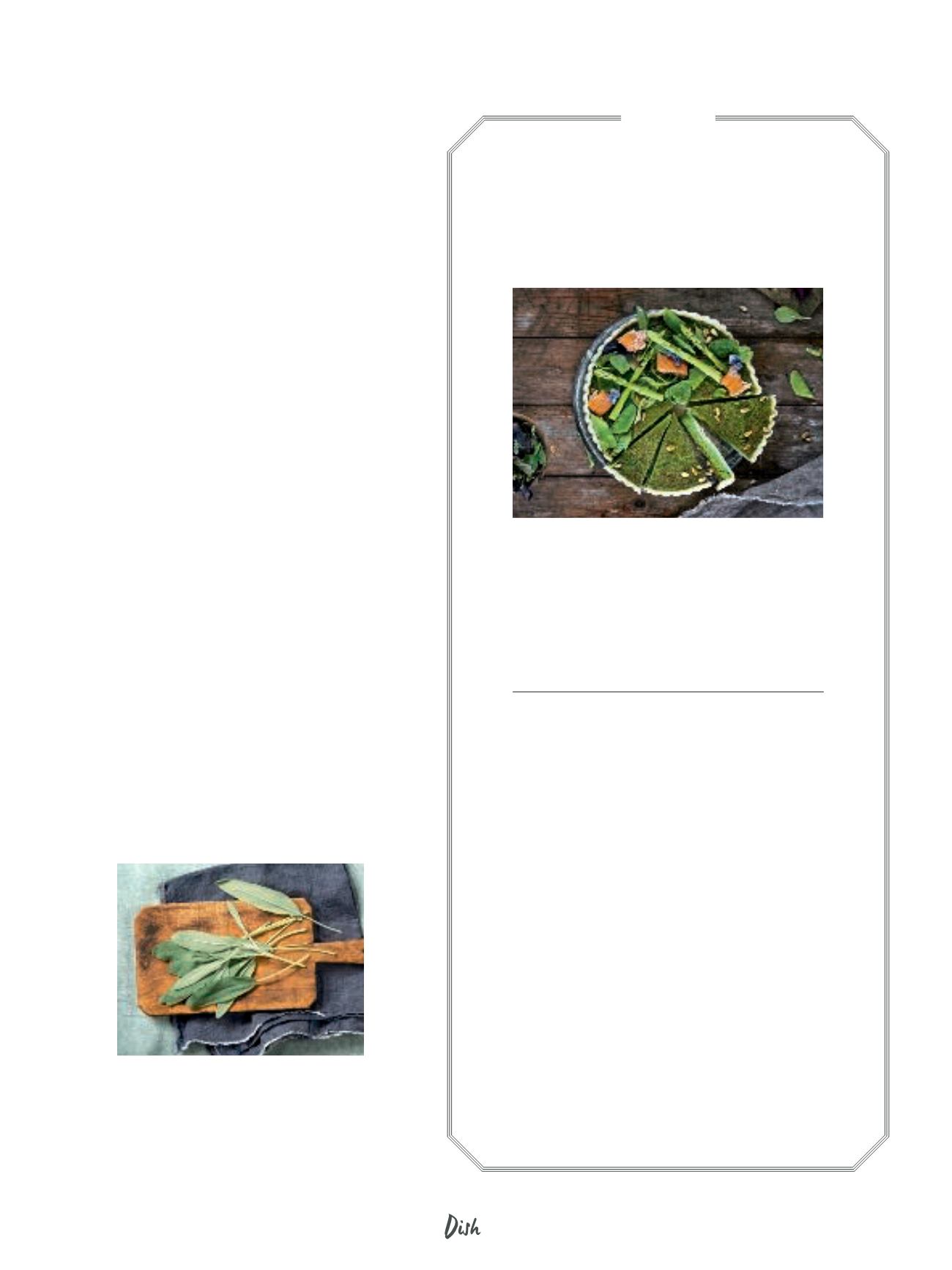

R
osemary potatoes, dill cucumber and
basil pesto? Delicious! But it gets
even more exciting. Some ice cream
parlours have raspberry and basil
ice cream on their menus and bartenders are
mixing gin with sage or thyme. With the slow
food movement, instead of mixed spices and
seasonings, we are increasingly seeing fresh
herbs on our plates and in our glasses.
Whether lemon fresh, hot and spicy or slightly
peppery – herbs are real aromatic miracles,
add the final touch to many dishes and are
also packed full of goodness. They provide
important vitamins and minerals, and their
essential oils have a soothing effect aiding
digestion.
ANCIENT KNOWLEDGE OF HEALING
One of the oldest herbs used in cooking is
coriander. Fans of Asian cuisine love it for its
sweet fresh flavour. Above all, however, it has
been hailed for its healing powers in India,
China and Egypt for thousands of years: It
helps soothe digestive complaints and reduces
inflammation. Coriander is also a popular
ingredient in South American cuisine, where it
refines ceviche –an everyday dish of fresh fish
marinated in lemon juice and cooked slowly.
Whether traditional cuisine or new nutri-
tional trends, green is good! For a long time,
followers of the superfood movement have
known how herbs can enhance your diet. In
the green smoothie, mix together berries, avo-
cado and kohlrabi or carrot leaves along with
wild herbs such as nettle and dandelion. Not
only are they stars of the kitchen because of
SAGE
Salvia officinalis
is rich in vitamins, especially B3 and
C, as well as minerals and tannins.
The latter reduce inflammation and have an antioxi-
dant effect. Without sage, there are countless Italian
dishes, such as Saltimbocca alla Romana
that simply would not exist.
Do-it-yourself
1.
Mix the flour and salt, rub together
with the butter to make crumbs. Add
the egg and quickly knead to create
a smooth dough. Mould into a ball
shape and wrap in cling film. Leave in
the refrigerator for around one hour.
Preheat the oven to 180 °C upper and
lower heat, grease the mould.
2.
Roll out the dough onto a floured
surface to create a round shape
slightly larger than the mould, place
onto the mould and shape the edge
of the dough. Cover the dough base
with baking paper, place the baking
beans on the paper to weigh it down
and bake blind for 15–20 minutes to
a blonde colour. Remove from the
oven and allow to cool.
3.
Meanwhile, blanch the herbs and
kohlrabi leaves for 1–2 minutes,
quench in iced water and finely
purée while dripping wet.
4.
Trim and peel the asparagus, trim
the sugar snaps. Cook both in salted
boiling water for around 10 minutes
until soft, quench in cold water. Put
2–3 asparagus sticks to one side for
garnishing, purée the rest with the
herb cream and sugar snaps. Season
with salt and pepper, mix together
with the cream and egg yolks. Coat
the base of the tart with the mixture
and bake in the oven at 160 °C
upper and lower heat for approx.
25 minutes until the vegetable herb
mix has thickened.
5.
Dry roast the pine nuts until fra-
grant. Tear the smoked salmon fillet
apart, distribute both ingredients
together with the remaining aspar-
agus over the tart. Garnish with the
sugar snap, edible flowers, spinach
and lettuce leaves.
PREPARATION
FOR 1 TART, DIAMETER 20 CM
300 g flour 2 pinches of salt, 120 g butter, 1 egg, butter for
greasing the mould, flour for rolling, baking beans; 4–5 sage leaves,
1 handful flat parsley, 1–2 bunches wild garlic, 2 handfuls kohlrabi
leaves, 300 g green asparagus, 150 g sugar snap, salt, freshly
ground pepper, 100 ml cream, 5 egg yolks; as well as: 40 g pine
nuts, 200 g smoked salmon fillet, 3–4 sugar snaps, edible flowers,
spinach and lettuce leaves for garnish
Herby salmon tart
This treat for the eyes served fresh out of the oven is packed
full of the herbal power of sage and kohlrabi leaves.
by WMF
|
89
















